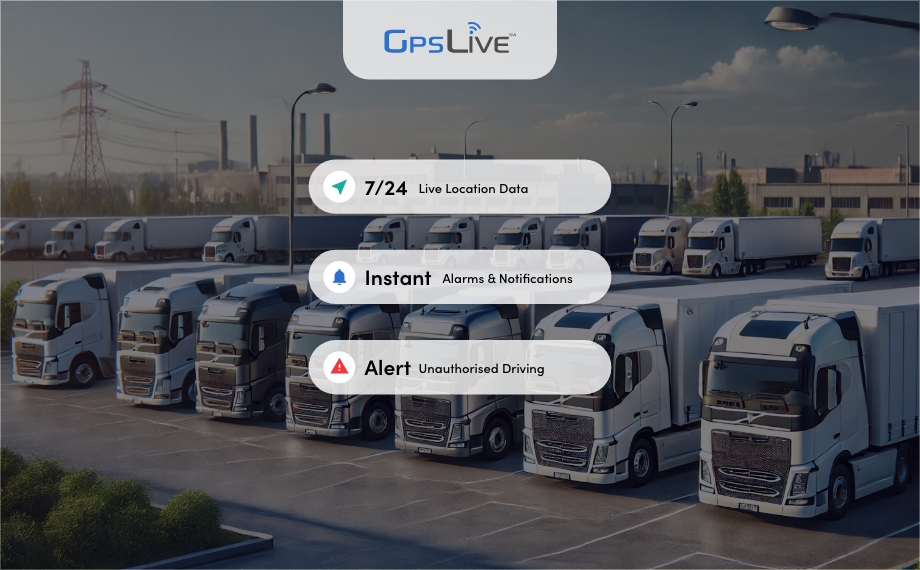Large-scale organisations or industrial units that substantially rely on assets have to manage numerous types of machinery and physical assets. From tracking its functionality to protecting it from thefts, asset management is more challenging than it sounds. While large-scale businesses can handle their assets smoothly, if you’re new in this business, asset monitoring can be very tough.
Hence, asset tracking has gained a lot of significance in recent years and become one of the essential aspects of industrial management. The market size of asset tracking is valued at USD 21.09 billion in 2023 and is expected to grow to USD 40.45 billion by 2028.
But what is asset tracking, and how can it help businesses grow? Here’s a guide that will tell you everything about asset tracking systems.
What is Asset Tracking?
Asset tracking helps businesses to track the location and movement of their valuable assets. An asset tracker is a tool that uses advanced technologies to provide the whereabouts of an asset. Advanced sensors in asset tracking solutions provide not just location details but historical data, custom alerts, and notifications, maintenance schedules, etc.

With data around location and usage, companies can closely monitor their assets and simplify asset management. This way, they can run uninterrupted operations without worrying about their assets.
How Asset Tracking Works?
Asset tracking software functions around different technologies, including RFID, barcodes, BLE (Bluetooth low energy), and GPS technology. Indeed, each technology has its own unique characteristics and benefits. But, most modern equipment tracking is GPS asset tracking, offering cutting-edge features.
The hardware of the asset tracker is attached to the asset, which uses GPS technology to send and receive location updates in real-time. All the data is stored in a central database that users can quickly and easily access. Robust asset trackers are equipped with the latest technologies like AI and IoT that provide data on temperature or humidity to protect time-sensitive assets.
The software of the tracker manages data gathered from the hardware. It comes with an intuitive dashboard providing a comprehensive view of assets–location, maintenance schedules, asset utilisation, notifications, etc.
Benefits of Asset Tracking
Asset tracking solutions are essential for businesses that require high-value assets and machinery to do business. Additionally, it is also beneficial for sensitive assets transported from one place to another, helping owners know their exact whereabouts and status. Let’s take a look at why businesses should invest in asset tracking solutions.
Real-time Tracking
Asset tracking helps with tracking asset location in real-time. For example, construction sites use several equipment and tools that sometimes are lost, or one cannot find them when needed. With equipment tracking, site managers can get location details about each piece of equipment, its movement, and who uses it. This way, one can save time and mitigate asset management and downtime challenges.
Prevent Theft
Big industrial units deploy expensive machinery that thieves typically have an eye on. In the fleet business, as well, thieves try to steal vehicles as they get good value from them in the black market. With real-time tracking, they can detect if unusual-like theft occurs with a change in asset movement and take immediate action. A geofence is a digital fence around a location–so the tracker sends an alert immediately when the equipment moves out of the geofenced area.
It helps to prevent theft, ensure asset security, and reduce costs associated with thievery.
Preventive Maintenance Schedules
Regular maintenance is vital to gain optimal machinery performance, which otherwise can result in breakdown and downtime. But how can site managers set timely schedules and ensure uninterrupted operations? GPS asset tracking provides data about machinery performance and helps them plan preventive maintenance schedules. Even if there is any minor performance issue, the tracker will notify site managers.
Accurate maintenance tracking improves asset utilisation, prevents breakdowns and related repair costs, and ensures streamlined workflows. Factories can ensure smooth operations without putting the machinery under pressure, enhancing operational efficiency and improving their bottom line.
Inventory Management
A comprehensive view of asset visibility, usage, and performance can help companies to manage their inventories. Construction sites can understand which tools are missing or lost and accordingly update company inventory. It helps them to avoid extra inventory and administrative costs to manage them. Instead of using spreadsheets (usually erroneous) to manage inventory control, businesses can ensure accurate data analytics.
Wrapping Up
Asset trackers also provide detailed and intuitive reports around asset usage and performance, which companies can use to drive strategic decision-making and meet compliance requirements. From streamlining operations to asset recovery, asset tracking systems keep track of your assets and help you with daily asset management tasks. The better the equipment performance, the better the production efficiency and profits.
Eventually, companies can save time, ensure loss prevention, and improve operational efficiency. With optimum asset utilisation, companies can produce high-value products, enhance customer satisfaction, and increase ROI.


